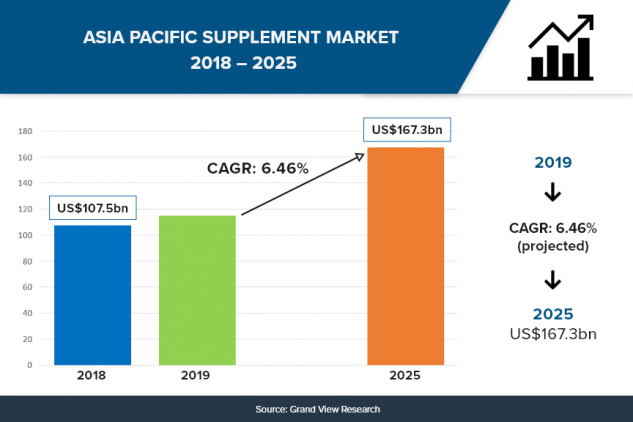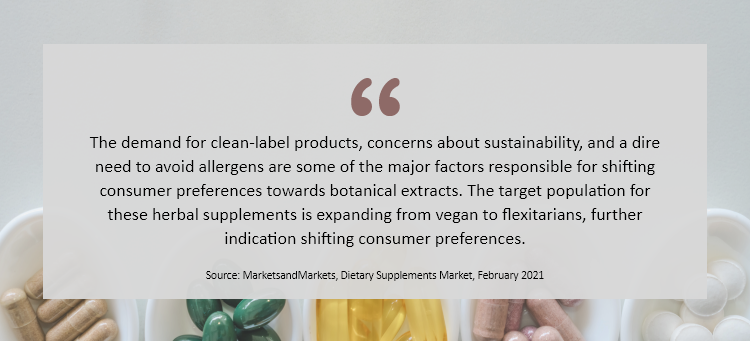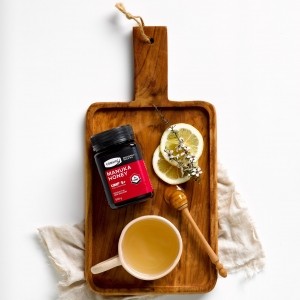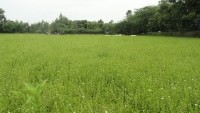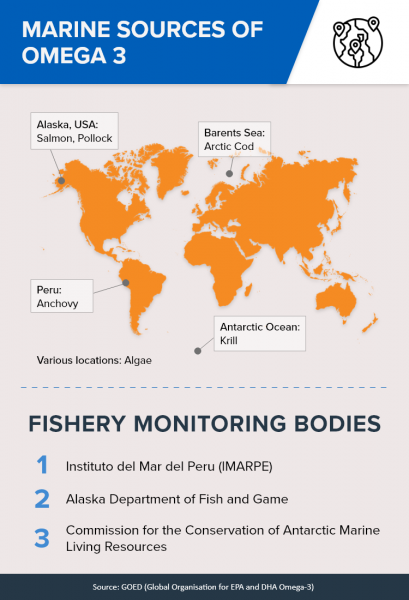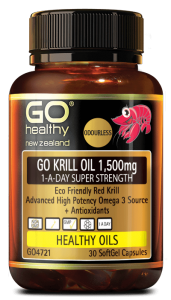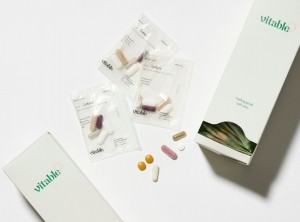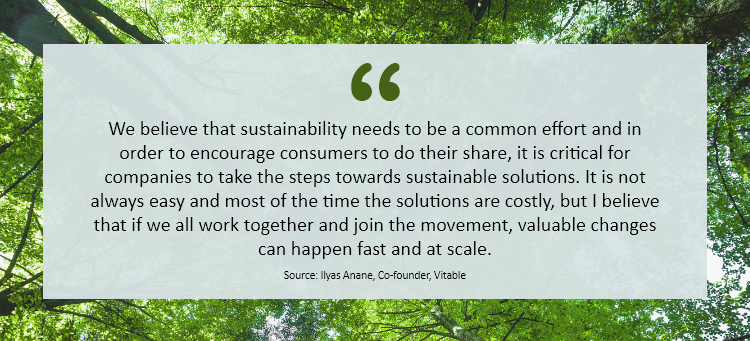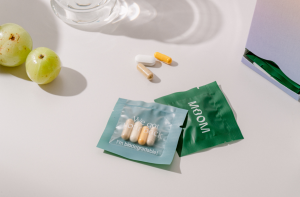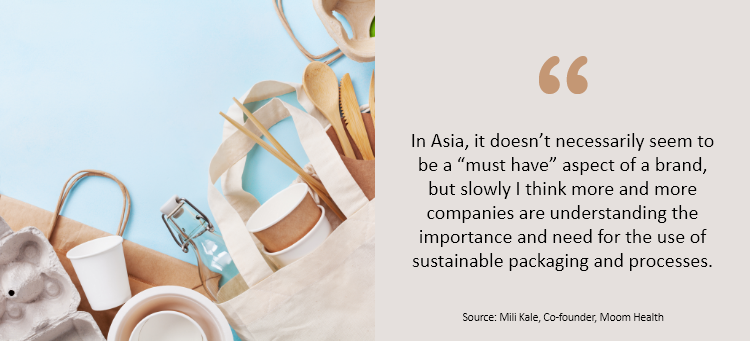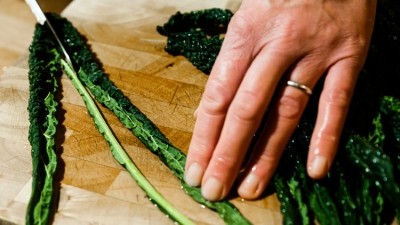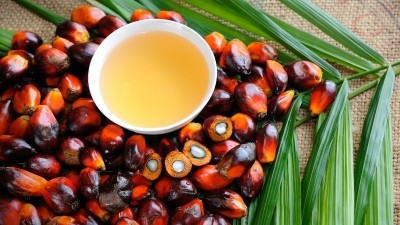VitamINSIGHTS: Supplements and sustainability – exclusive in-depth analysis
Sustaining success: How Swisse, Comvita, Yakult and more are driving eco agenda across nutra sector
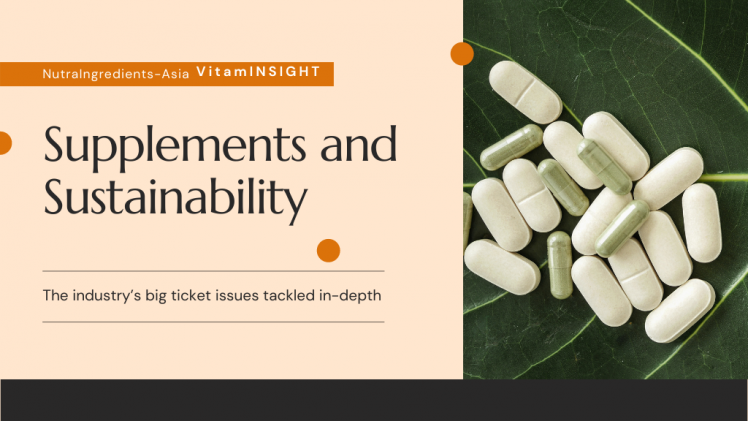
In the first of our monthly long-form multimedia series, VitamINSIGHTS, that shines the spotlight on the most pressing business and operational topics concerning the industry, we reveal the latest sustainability insights from Swisse, Comvita, Yakult, Sirio Pharma, and more.
The size of Asia Pacific’s supplement market was US$107.5bn in 2019 and is projected to grow at a CAGR of 6.46 per cent by 2025, according to Grand View Research.
But within the burgeoning market, consumer preferences are clearly shifting towards products that are deemed to be more sustainable.
Part I: Sustainability on land – a look into botanicals and honey
Against this backdrop, companies such as Swisse have incorporated ingredient sustainability through partnerships and new product launches.
Towards the end of last year, Swisse Earth – a new range of vegan powder blends was launched. The tagline is to “touch the planet as lightly as possible whilst creating beautiful, efficacious wellness products.”
According to the company, this is a step to its sustainability goals and also resonates with consumers who are environmentally conscious.
All products from the range contains Kakadu Plum sourced via a partnership with the Mamabulanjin Aboriginal Corporation – a not-for-profit organisation supporting the Aboriginal communities.
Another unique part of the range is that some of these ingredients are upcycled – such as green banana used in its Beauty Cleanse SKU.
Watch the following interview with Ana Laskova, associate marketing director ANZ at Swisse to find out more about the new range.
Manuka honey maker Comvita, which also operates an olive leaf extract supplement business, is prioritising sustainability by cutting pesticides use and encouraging native wildlife on its plantations.
For its manuka honey business, the company enforces sustainable practices by taking full control of the entire production process, from planting the manuka trees, limiting pesticides and agrichemical use, bees breeding, to honey extraction and packaging.
“Because we're actually in control for a lot of what we move through our supply chain. It means that we can establish our own standards.
“We have code of standard around how we manage our hives, bee welfare and pests within the hives and for that we look to do that in the most sustainable, environmentally friendly way possible,” said Tracy Brown, chief operations officer at Comvita New Zealand.
For example, the company sources its beehives from an organic provider that builds the hives, which means that the timber has not been chemically treated.
The company is also trialling the use of organic products, instead of chemical products which is effective but less environmentally friendly to control mites that leech on bees.
Similarly, for its olive leaf extract business operating out of Australia, the company has introduced a programme where it releases ‘good bugs’ to hunt down ‘bad bugs’ on the trees.
Brown says that this can naturally improve the ecosystem around the trees and allow native insect populations to thrive.
However, if spot spraying is required, the company will use a natural pyrethrum spray made from chrysanthemum daisies. Pyrethrum leaves no residue on the leaves and is classed as organic.
To preserve native wildlife, the company maintains wildlife corridors by removing invasive weeds and pest trees.
“We encourage native wildlife (koala’s, kangaroos, echidna’s, birds, insects, spiders) through our wildlife corridors so they have safe and protected access to land bordering our groves.”
The company also targets to improve biodiversity by planting a native tree for every pot of manuka honey sold, according to its Comvita Harmony Plan introduced last year.
It is not only the finished product brands that are concerned with sustainability.
India-based ingredient supplier Natural Remedies is also enforcing a wide-ranging sustainability agenda and is seeing tangible benefits from doing so.
About three to four years ago, it introduced a sustainability programme known as HerbSecure for botanical ingredients that it produces in a larger scale. The company invests about two to three per cent of its total revenue to the scheme.
They are 1) Bacopa monnieri for the ingredient trademarked BacoMind to support cognitive abilities, 2) Andrographis paniculata for AP-Bio, an ingredient for fast relief from cold and flu symptoms, and 3) Ocimum tenuflorium (Holy Basil) for OciBest, an ingredient to support stress management.
Under this programme, the company adheres to four key frameworks, including Good Agricultural Practices (GAP), Good Manufacturing Practices (GMP), Good Quality Practices, Good Collection Practices, and Good Laboratory Practices.
Cultivated in marshes and wetlands, Bacopa monnieri is grown manually without the use of machinery, which is a more environmentally friendly method, Abey Thomas, head of global marketing at Natural Remedies told us.
“Natural yield is also best in such ecosystem and we do not use any pesticides and herbicides. Since the cultivation is done manually, there is no fossil fuel burnt as well.”
The company is engaging an NGO to identify small farmers who traditionally cultivate rice padi. Under the initiative, the farmers will need to undergo technical training and have transformed about 50 per cent of their rice padi field to cultivating Bacopa monnieri, which has also increased their income.
Prior to that, the company purchases the botanical from traders.
“The challenges of buying from the traders is that there might be pesticide contamination and fungi contamination. Now, we can have complete control over the quality, pricing, and traceability of the raw materials.
“The crop cycle is about seven months, and now, in the first three months, we can check the crop growth, mitigate potential problems, which reduces the burden on the ecosystem.”
Today, the company gets 30 to 35 per cent of its raw material under the Herbsecure program and the remaining from the traders. Thomas said the company aimed to reverse the proportion in the next five years.
Part II: Sustainability in the sea – a look into marine sources
Omega-3 is one of the first things that comes to mind when we talk about nutrition sourced from the sea.
Common sources of marine omega-3 include fish and krill oil.
According to GOED, the largest source of omega-3 is anchovy oil, sourced primarily from the Peruvian anchovy fisheries. It is the starting material for more than half of supplement products, including refined oils as well as fish oil concentrates.
In Peru, the fishing quota is determined by a scientific government body that surveys the biomass twice a year and sets a quota based on maintaining a healthy population.
Fishing seasons could be cut short or cancelled if there are too many juveniles or spawning fish, Ellen Schutt, executive director of GOED said.
Moreover, many omega-3s sourced from fishes, including salmon, tuna, and cod liver oil are waste products from the seafood industry.
While interest in plant-based EPA and DHA omega-3s, such as marine microalgae, is growing, she pointed out that fundamental differences existed between plant-based and fish/krill-based omega-3s.
“Nearly all plant-based omega-3s are alpha-linolenic acid (ALA), such as hemp or flax, but these do not have the same strong and varied health benefits as EPA and DHA.
“Manufacturers of both marine-based sources and plant-based sources of EPA and DHA are concerned about sustainability,” she said.
New Zealand-based supplement firm GO Healthy is an example which is working with marine ingredients companies that practice sustainable fishing.
It is working with Norway-based Aker Biomarine and local supplier Aroma NZ for its GO Krill Oil and Go Mussel supplement range respectively.
“Compared to other fisheries which set precautionary catch limits at 10 per cent or more, Aker Biomarine limits their krill catch to one per cent of the stock biomass, leaving 99 per cent for natural predators.
“This follows the Commission for the Conservation of Antarctic Marine Living Resources (CCAMLR) regulations. They are also MSC [Agriculture and Food Marine Stewardship Council] certified,” general manager Alex McDonald at GO Healthy said.
He added that all Aker Biomarine catches were reported to CCAMLR and krill harvesting was restricted to an area of the Southern Ocean known as Area 48.
“Fishery management in this area is robust, as the approval of 25 governments is needed to change any fishing regulations in Antarctic waters.”
As for Aroma NZ, he said that the company has been sourcing refined green-lipped mussel powder and oil from their family-owned farms in the Marlborough Sounds and Banks Peninsula.
“Green-lipped mussels are one of aquaculture’s most environmentally friendly nutrient sources. Farming them requires seawater, mussels and some Kiwi ingenuity. Aroma NZ is A+ certified. The A+ sustainable aquaculture standard is a sustainable management framework, run by Aquaculture New Zealand.”
China-based OEM/ODM health foods manufacturer Sirio Pharma has also made strides in this area.
The company has developed an enteric soft capsule containing fish oil which has gained certification from the Friend of the Sea (FOS), Lee Li, R&D manager at the firm said.
Part III: Sustainability in product packaging
The other major consideration for sustainability lies in product packaging.
One company, Vitable, is packing vitamins into compostable sachet films, made from plant-based cellulose produced from sustainably harvested Eucalyptus trees.
“We’ve developed our daily sachets using non-plastic packaging to combat the throwaway culture of the traditional vitamins model. This year we prevented more than 350,000 vitamin plastic bottles from ending up in landfill,” said Ilyas Anane, co-founder of Vitable, an Australia-based personalised supplement company.
Certified to be home compostable, its free from petroleum plastic packaging breaks down naturally and return nutrients back into the soil under home-composting conditions without releasing toxins.
For users without access to composting, Vitable’s sachets can be rid of with regular trash, which Anane said would break down much faster than regular plastic.
The sachet film has been independently tested and certified by TUV AUSTRIA’s OK compost HOME system and holds the Australian ABA certification.
Anane added: “Our home-compostable film has extra resistant moisture and oxygen barriers that ensure the vitamins are protected during transportation and stay fresh once delivered.”
Cost-wise, Anane told us: “Sustainable packaging solutions are much more expensive than plastic packaging because they are not yet broadly available. In our case, our home-compostable material can be 30 to 50% more expensive than existing packaging solutions.”
Nonetheless, the company has absorbed the extra costs without passing the price to consumers.
Another personalised supplement company Moom Health based in Singapore is packaging its vitamins into biodegradable plastic sachets, and working on making it recyclable too.
Unlike Vitable’s compostable packaging, Moom’s packaging is biodegradable in regular trash.
“Our current sachet material is Reverte plastic, which is an oxo-biodegradable additive that has been developed for a wide range of polymers and packaging applications,” said Mili Kale, co-founder of Moom Health.
Oxo-biodegradable is a combination of oxidation and biodegradability.
The oxidation phase reduces the polymer molecular weight and introduces oxygen into the structure. This process transforms the plastic from long strands to much smaller lengths.
Through this process, the material loses its physical strength, making it brittle and non-plastic.
These lower molecular weight species are then converted by bacteria into biomass carbon dioxide and water.
The firm also use 100 per cent FSC recyclable paper for its secondary packaging.
Japanese firm Yakult Honsha, on the other hand, has established a sustainability strategy, what it calls Environmental Vision 2050 in March last year.
For instance, Yakult plans to reduce use of plastic containers and packaging by 30 per cent by 2030.
“In Japan, we are working fast to remove straws attached to products that can be consumed without them,” Hitoshi Ishiguro, general manager, CSR promotion and public relations said.
The company is also exploring the concept of horizontal recycling, where a used product is turned into a material resource and is then used to create the same product.
Part IV: Sustainability in manufacturing
Lastly, sustainable manufacturing is another aspect that is seeing significant innovation.
Sirio Pharma has embarked on 40 energy and resources saving initiatives in its APAC operations last year.
“We have enhanced our wastewater management techniques by increasing reclaimed water facilities for water recycling and this has reduced our use of one-time usage water by 66k tonnes,” Duke Du, environment, health, and safety (EHS) manager at Sirio Pharma said.
In total, the company has since saved about 74k tonnes of water – equivalent to 35 standard size swimming pool.
It has also managed to reclaim and recycle about 30 per cent of heat energy by using air compressor heat recovery.
With an improved cooling system and controlled use of air conditioner, the company has also managed to save over 20 per cent of yearly electricity usage.
Yakult, on the other hand, through its Environmental Vision 2050, aimed to switch to renewable energy such as introducing more solar power generation systems at domestic dairy plants.
“At the Yakult Central Institute, where we use city gas, we introduced carbon neutral city gas from April 2021, and this will be done over a five-year period.
“In addition to water conservation efforts, we are examining the establishment and operation of technology for reusing treated water. We are also creating a water management plan based on water risk evaluations,” Ishiguro said.
Meanwhile Australian supplement giant Blackmores recently reported modest one per cent reduction in total group carbon emissions, but this was the first year it incorporated a full year of emissions from a manufacturing facility at Braeside in Victoria, which it acquired in October 2019.
Blackmores CEO Alastair Symington stated: “In the first year since committing to Net Zero Carbon Emissions by 2030, we have taken clear steps to address our greenhouse gas emissions impact. This is the first year we have reported a full year of emissions relating to the manufacturing facility at Braeside in Victoria which we acquired in October 2019. Even with this increased activity, overall emissions remained broadly in line with our prior corresponding report as a result of the first interventions that are part of our pathway towards the Net Zero goal. Group manufacturing emissions intensity was down 17% compared to the prior year which is a good indicator of our underlying progress.”
Furthermore, 25% of energy is now from renewable sources, up from 8% the prior year, and 6% of the corporate fleet is now hybrid vehicles.
While many companies are making significant sustainability advances, the rate of progress fluctuates widely.
As the International Alliance of Dietary/Food Supplement Associations (IADSA) points out, there is plenty more that the industry could do.
“Across the supplement sector there are companies at different stages of their sustainability journeys.
“While a range of companies – usually large companies – are far advanced in both analysing and implementing their programmes, there are still many companies who have yet to build their sustainability roadmap,” Simon Pettman, executive director at IADSA said.
With consumer, and increasingly investor, expectations around sustainability here to stay, the nutra brands that can quickly and effectively develop their policies can carve out a competitive advantage.
And they can do so safe in the knowledge that they are preserving the environment, just as their products seek to preserve consumers’ health.
